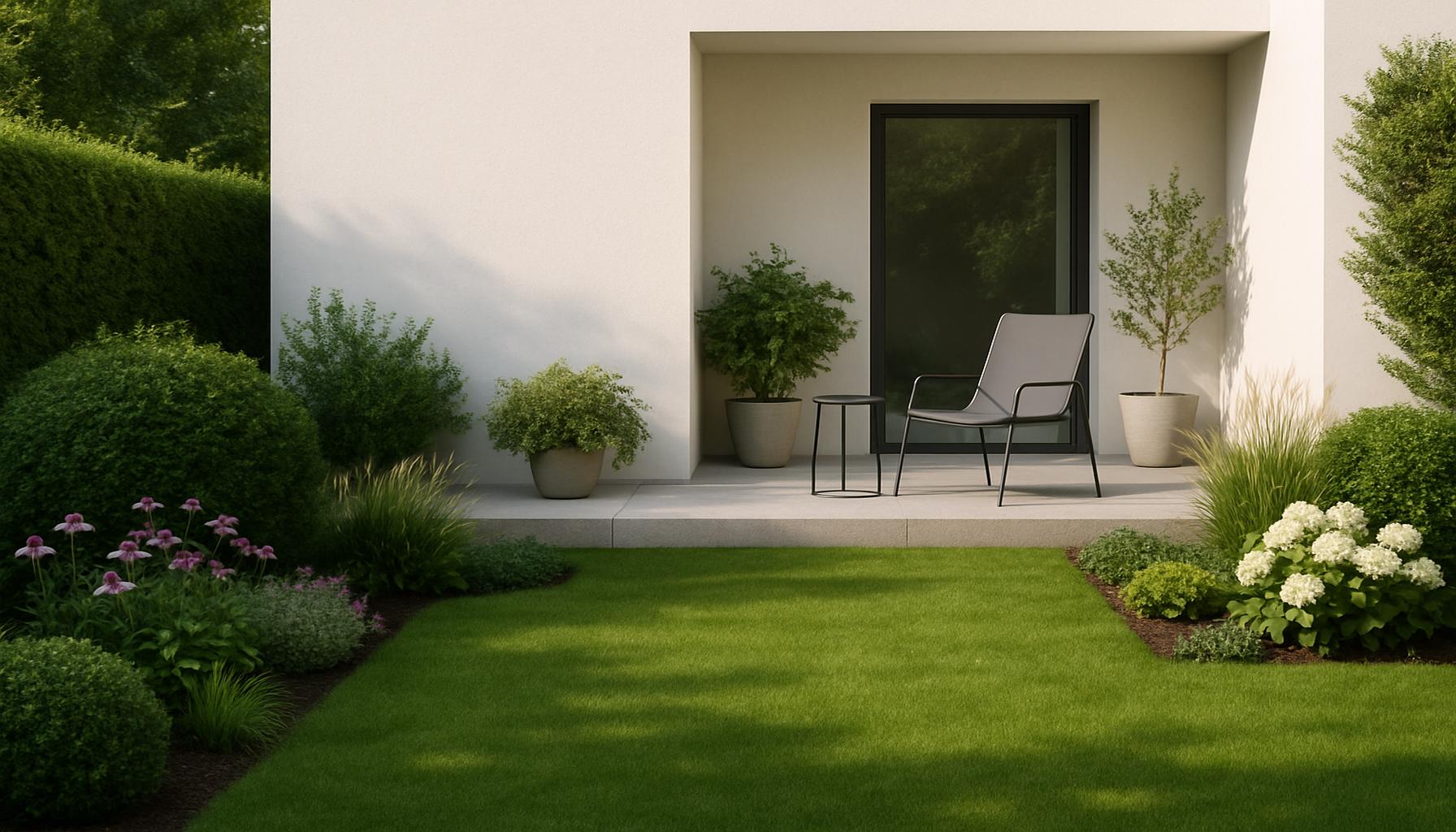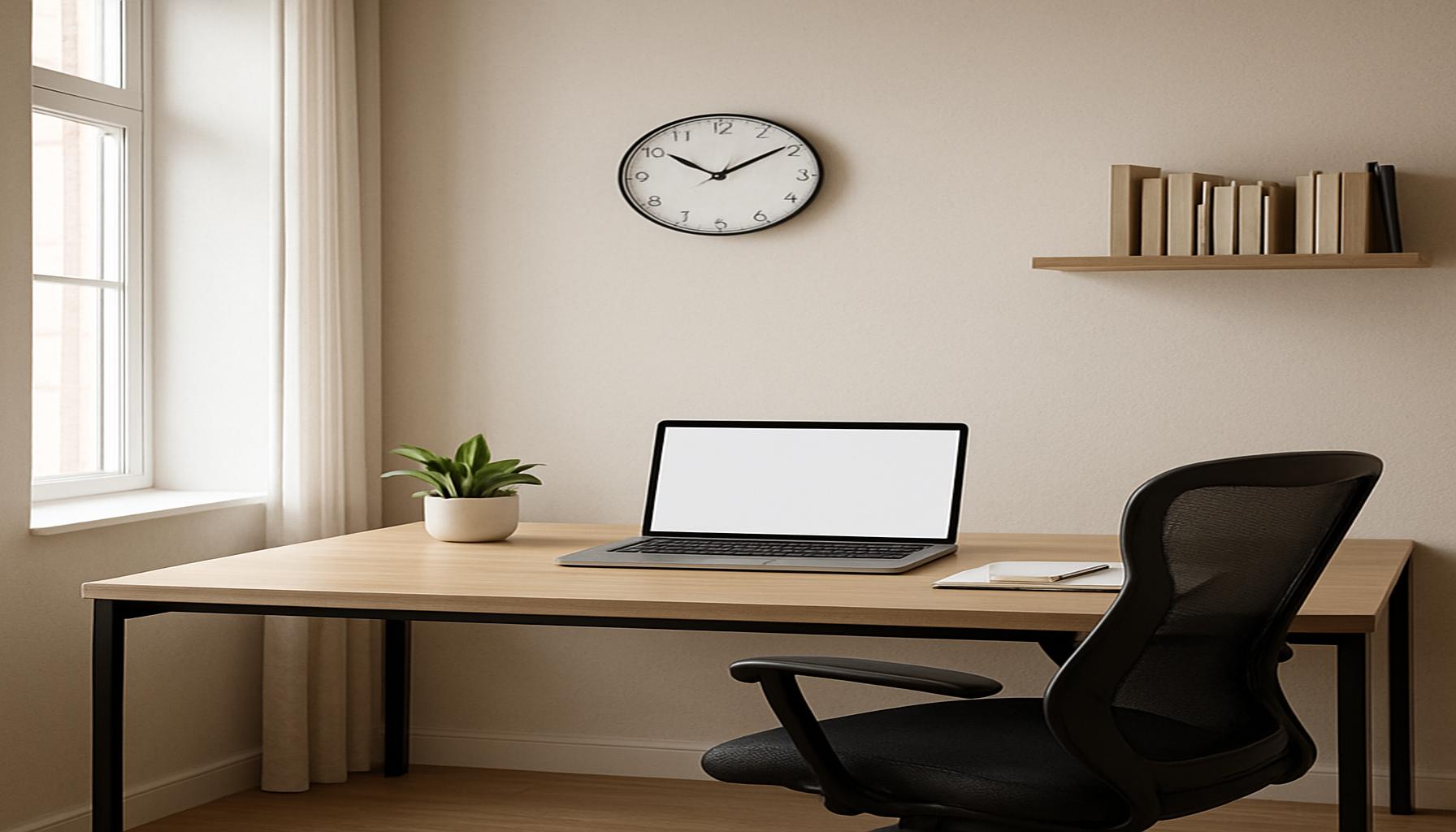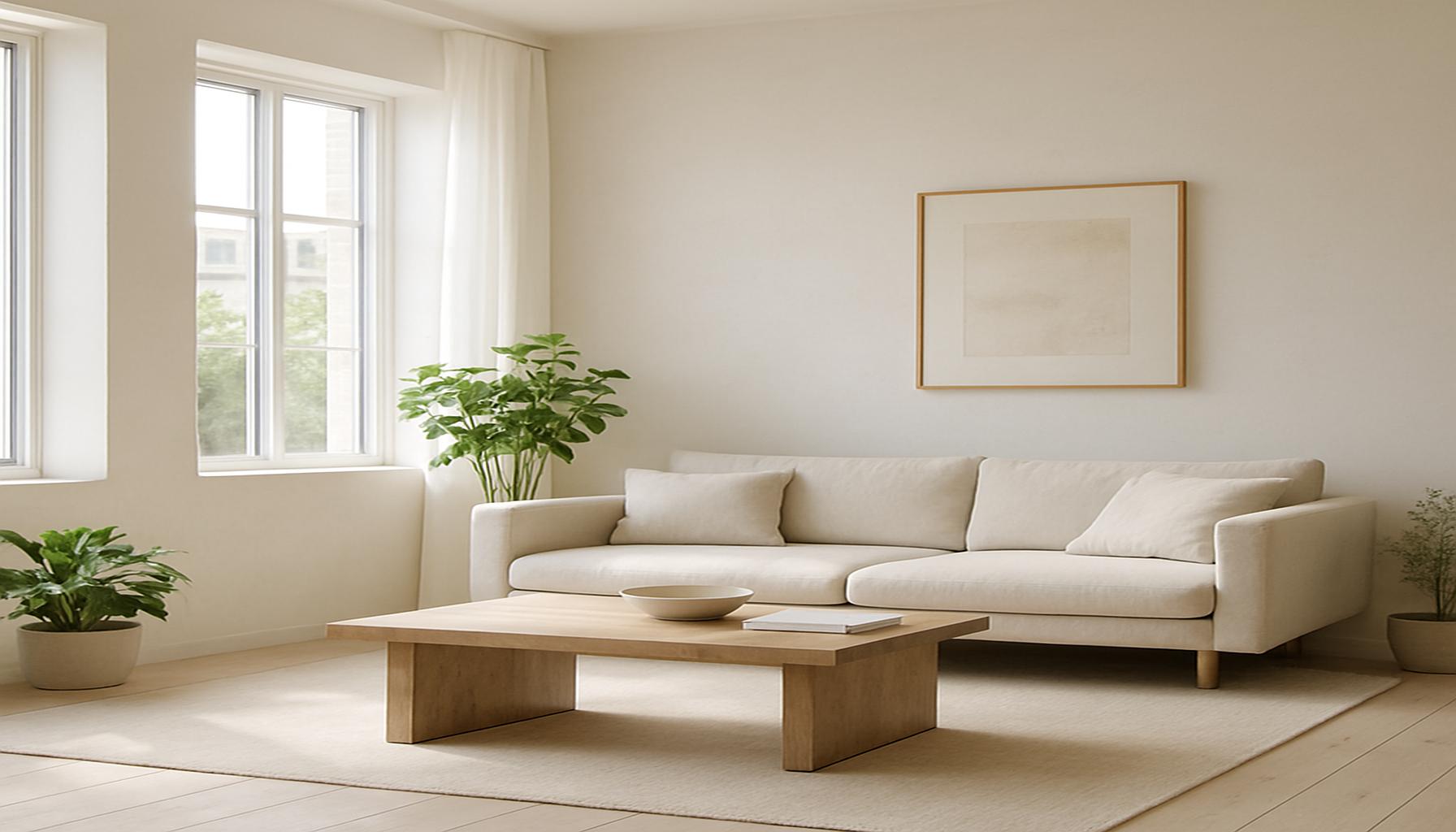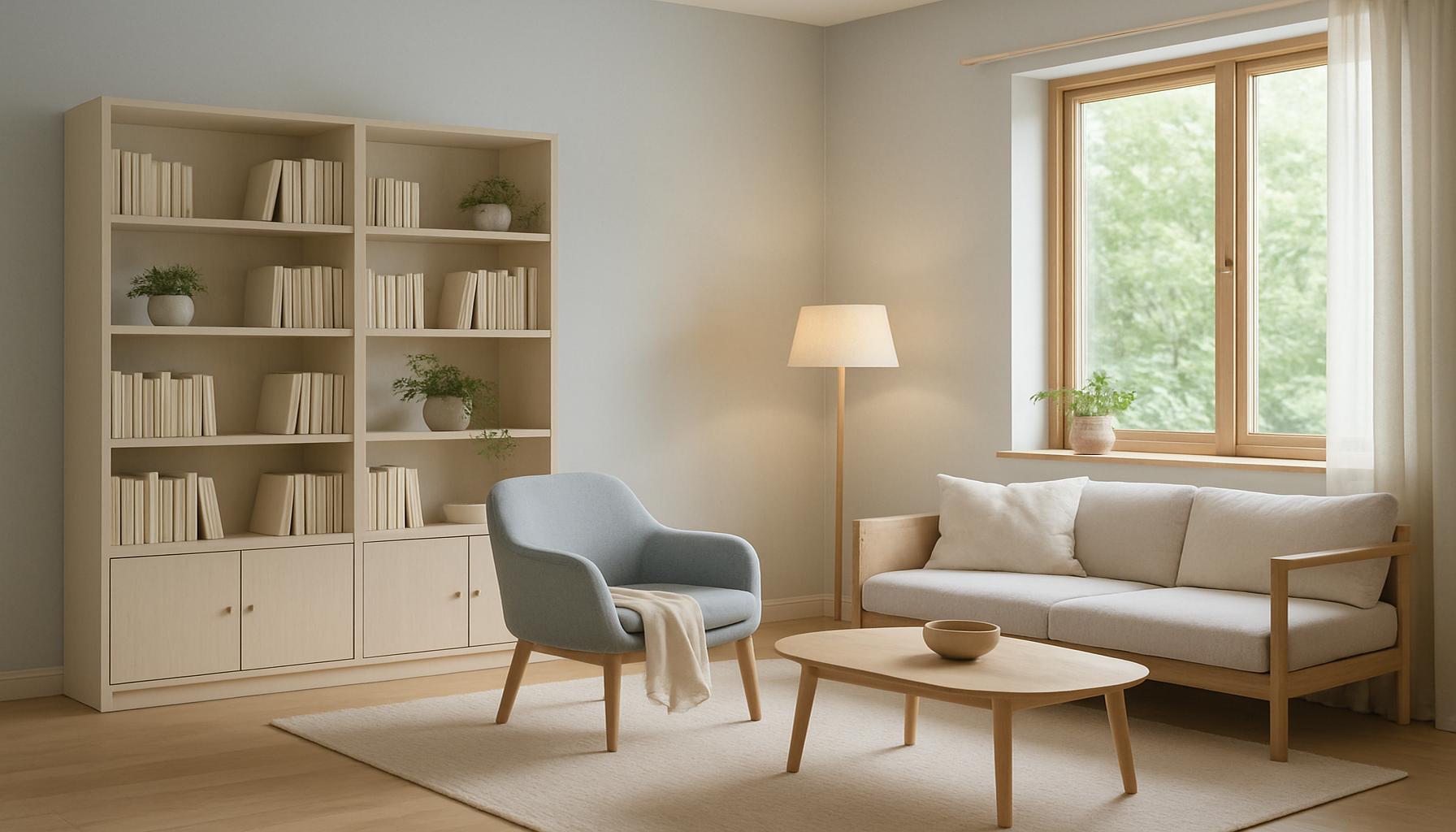Transforming Outdoor Spaces: Minimalism in the Garden and on the Balcony

Embracing Minimalism in Outdoor Spaces
In a society where speed and complexity often dominate our daily lives, minimalism emerges as a breath of fresh air, especially in our outdoor spaces. This growing trend reflects a desire for a more harmonious coexistence with nature, offering a means to escape from the chaos of urban living. Transformations in gardens and balconies showcase a commitment to simplicity, inviting tranquility while celebrating the inherent beauty of the natural environment.
The principles of minimalism in outdoor design emphasize clean lines and functionalities that serve practical purposes. For instance, choosing modern furniture with sleek profiles enhances both aesthetics and usability, allowing homeowners to engage with their outdoor spaces comfortably. This approach extends to the use of a limited color palette, which creates a cohesive look that can visually unify varied elements within the garden. Shades of greens, browns, and whites can dominate the scene, establishing a calm and relaxing atmosphere.
Integrating natural materials such as wood, stone, and gravel can further enhance the connection to the environment. A rustic wooden bench can serve as a focal point while blending seamlessly into the surrounding landscape. Such choices not only promote harmony but also support sustainability efforts by using locally sourced materials.
Minimalist gardens prioritize mindfulness through thoughtful design. Features like native plants reduce the need for extensive maintenance while encouraging local wildlife. For example, planting echinacea or black-eyed Susans can attract pollinators, supporting the ecosystem while providing visual interest. The use of hardscaping is crucial as well; patios made of permeable pavers can offer durable surfaces for social gatherings while allowing rainwater to permeate the ground below.
Open spaces are another vital aspect of minimalist design, promoting flow and accessibility. These areas encourage movement, whether it’s through a meandering path that invites exploration or an open lawn perfect for relaxation. In urban environments where space is at a premium, minimalist balcony makeovers prove beneficial by maximizing greenery without overwhelming the area.
Creative balcony ideas include the incorporation of vertical gardens, which save space while providing lush greenery. Utilizing foldable furniture can enhance flexibility, allowing for an adaptable living space that changes with the seasons. Meanwhile, strategically placed lighting not only adds ambiance during evening gatherings but also highlights the beauty of your outdoor sanctuary.
Minimalism in outdoor spaces represents much more than just an aesthetic choice; it is a lifestyle change that encourages individuals to slow down, appreciate their surroundings, and invest in sustainable practices. As we explore the transformative power of minimalism in outdoor living, we invite you to consider how these principles can elevate your own garden or balcony. By diving deeper into clever strategies and innovative ideas, you can make your outdoor sanctuary a reality, fostering a peaceful retreat amidst the hustle and bustle of modern life.
DISCOVER MORE: Click here for effective organization tips
Key Elements of Minimalist Outdoor Design
To truly embrace minimalism in outdoor spaces, understanding its key elements can empower homeowners to create inviting environments that resonate with simplicity and functionality. The reduction of clutter and the strategic selection of elements are foundational to achieving a minimalist aesthetic, whether in a sprawling garden or a compact balcony. Here are some essential aspects that define minimalism in these outdoor spaces:
- Streamlined Plant Choices: Selecting a few carefully curated plants can significantly enhance a minimalist garden. Opt for species that not only thrive in the local climate but also provide year-round interest. For instance, native plants like lavender and ornamental grasses are low-maintenance and visually appealing, offering texture without overwhelming the senses.
- Neutral Color Schemes: Keeping a neutral color palette can create harmony among different elements in the space. Shades of green, beige, and gray contribute to a tranquil atmosphere, reminiscent of peaceful nature. This approach allows plants and organic materials to become the focal points, as opposed to vibrant furniture or decor distracting from the natural landscape.
- Functional Hardscaping: The inclusion of patios, pathways, and retaining walls crafted from natural materials enhances the minimalist design. For example, permeable pavers not only provide a functional walking area but also allow for natural water drainage, fostering environmental mindfulness while maintaining a clean aesthetic.
- Multi-Functional Furniture: In smaller outdoor areas, such as balconies, choosing furniture that doubles as storage or can be easily moved is essential. Foldable chairs and expandable tables optimize space, allowing homeowners to adapt their outdoor setup based on the occasion or time of day.
- Incorporation of Natural Elements: Integrating stone, wood, and other natural materials seamlessly into the design pays homage to the surroundings. A wooden planter box or a stone bench establishes a rustic feel while promoting sustainability through eco-friendly material choices.
By focusing on these key elements, homeowners can begin to reconstruct their outdoor spaces with a minimalist mindset. As they simplify and declutter their gardens and balconies, they will find that less truly can be more, creating an environment that invites relaxation and connection with nature.
Mindful Accessories and Decor
The beauty of minimalism lies not just in the absence of excess, but in the thoughtfully chosen accessories that complement the overall design. A few delicately placed lanterns or artisan-made sculptures can enhance the sensory experience without overwhelming the senses. The key is to choose items that serve a purpose or add a unique artistic touch to the outdoor setting.
As homeowners delve into minimalist designs, they should also consider layering textures and heights using varying plant arrangements, ensuring that even within a minimalist framework, there is depth and visual interest. By applying these concepts, transforming an outdoor space into a minimalist haven becomes an achievable goal, paving the way for a serene retreat from everyday life.
| Advantages | Details |
|---|---|
| Efficient Use of Space | Minimalism promotes a thoughtful arrangement of plants and furniture, enhancing functionality. |
| Aesthetic Appeal | Engagement with a limited palette creates an elegant atmosphere and allows nature to shine. |
| Reducing Maintenance | Fewer plants and features lead to a lower-maintenance environment, offering more relaxation. |
| Environmental Benefits | Minimalist gardens focus on sustainable choices, promoting biodiversity and resource conservation. |
As you embrace the principles of minimalism in your garden or balcony, the concept of efficiency becomes paramount. Every element serves a purpose, whether it’s a simple rock garden or a lone potted plant, allowing you to maximize your available space creatively. The result is not just a living area, but an aesthetic retreat that offers peace amidst the chaos of urban life. Clean lines, neutral colors, and the conscious elimination of clutter can transform your outdoor oasis into a stylish sanctuary. Additionally, the appeal of minimalism lies in its effortless charm. This approach invites mindfulness and appreciation for each individual plant or decorative item you choose, cultivating a space that reflects personal expression without overwhelming the senses. Consider how minimalist solutions not only benefit our immediate environment but also contribute positively to the broader ecosystem. By opting for—native plants, for instance—you can achieve a garden that is both beautiful and harmonious with nature, allowing for rich biodiversity to thrive even in smaller landscapes. Exploring minimalism further can unlock new possibilities for your outdoor space and lifestyle, enticing you to delve deeper into these sustainable practices.
DISCOVER MORE: Click here to learn how minimalism can transform your space
Creating Tranquil Minimalist Environments
In the pursuit of transforming outdoor spaces through minimalism, the goal is not only to simplify but to establish a sense of peace and harmony. By considering the balance between form and function, homeowners can build an environment that breathes serenity and encourages mindfulness. Here are several strategies to create a tranquil minimalist atmosphere in gardens and balconies:
- Open Sight Lines: Maintaining clear sight lines can enhance the feeling of spaciousness in outdoor areas. This could mean positioning plants strategically to avoid overcrowding and ensuring that pathways lead the eye seamlessly through the space. In balcony designs, using railing planters that allow for unobstructed views can create an illusion of expansiveness while still incorporating greenery.
- Water Features: The gentle sound of water can significantly elevate a minimalist outdoor ambiance. A simple fountain or a small reflecting pool can become a focal point without being overwhelming. These features can be designed to blend with existing elements, ensuring they complement rather than dominate the space.
- Seasonal Adjustments: One of the beauties of a minimalist garden is its adaptability to the changing seasons. Homeowners can embrace seasonal variation by incorporating a few evergreen plants, which provide structure year-round, alongside deciduous varieties that add color in spring and fall. This approach minimizes the need for frequent changes while maintaining visual interest throughout the year.
Investing in Quality Over Quantity
Minimalist principles strongly advocate for quality over quantity in all design choices. By investing in fewer, high-quality outdoor items, homeowners can reduce clutter while enhancing the overall aesthetic of their spaces. This could manifest as choosing durable, weather-resistant materials for outdoor furniture that can withstand the elements while remaining stylish.
For instance, opting for a single statement piece, such as a beautifully crafted wooden bench or a striking modern sculpture, can draw attention and serve as a conversation starter. This contrasts with overcrowding the area with numerous less impactful items, which would detract from the minimalist vision.
Integrating Smart Technology
In the era of smart homes, integrating technology into outdoor spaces can enhance the minimalist approach. Smart irrigation systems that monitor soil moisture can help maintain plant health without excessive equipment or attention. Additionally, smart lighting solutions allow homeowners to set the mood with minimal visual clutter, activating lights only when needed and eliminating unnecessary fixtures.
The incorporation of technology does not mean sacrificing simplicity. Instead, it can streamline maintenance and enhance the functionality of gardens and balconies, allowing homeowners to enjoy their outdoor retreats without the stress of upkeep.
As homeowners explore these transformative ideas, the journey toward a minimalist outdoor space becomes not just a design choice but an opportunity for personal expression and reflection. By embracing a more straightforward approach without compromising on beauty and functionality, anyone can achieve an outdoor sanctuary that invites relaxation and appreciation of nature.
DIVE DEEPER: Click here to uncover the power of intentionality in your space
Conclusion: Embracing Minimalism for Outdoor Serenity
As we reflect on the evolving landscape of transforming outdoor spaces, it becomes clear that minimalism offers a path towards not only aesthetic beauty but also mental tranquility. By harmonizing structure with simplicity, homeowners can create environments that foster relaxation and connection to nature. The principles discussed—from maintaining open sight lines to investing in quality over quantity—serve as essential guidelines for anyone looking to embrace a minimalist lifestyle in their gardens and balconies.
Moreover, as we integrate smart technology into our outdoor areas, we redefine the future of gardening and urban living. These advancements allow for convenience while ensuring that simplicity remains at the forefront. The result is an outdoor sanctuary that not only minimizes clutter but also elevates our daily experiences, encouraging us to savor moments of stillness amidst life’s chaos.
In conclusion, the journey towards a minimalist outdoor space transcends mere design choices; it is an invitation to introspection and mindfulness. As you embark on this transformative adventure, consider how each element—be it a single eye-catching piece or a soothing water feature—contributes to the overall harmony of your space. Ultimately, embracing minimalism in your garden or balcony can foster a deeper appreciation for nature and create a peaceful retreat that rejuvenates both body and soul.



